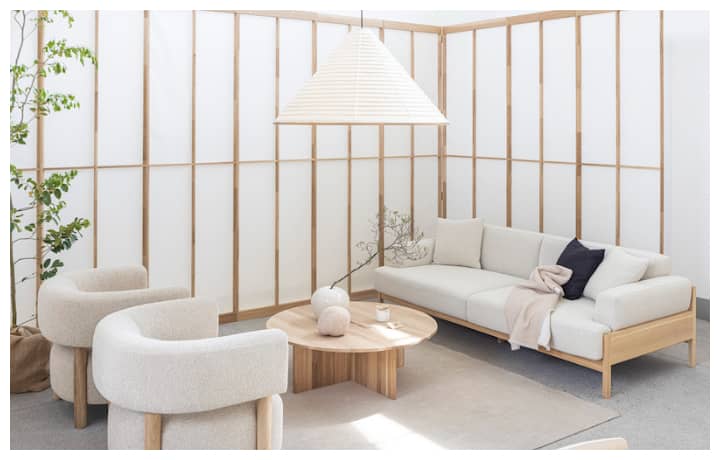
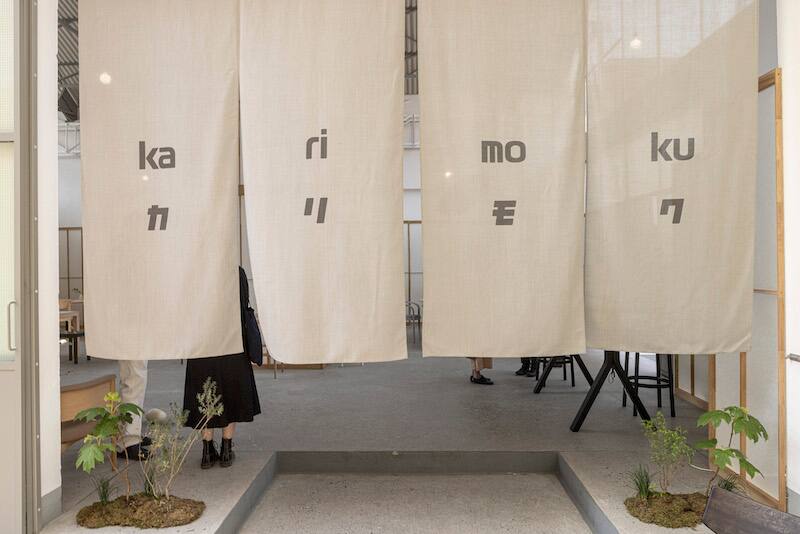
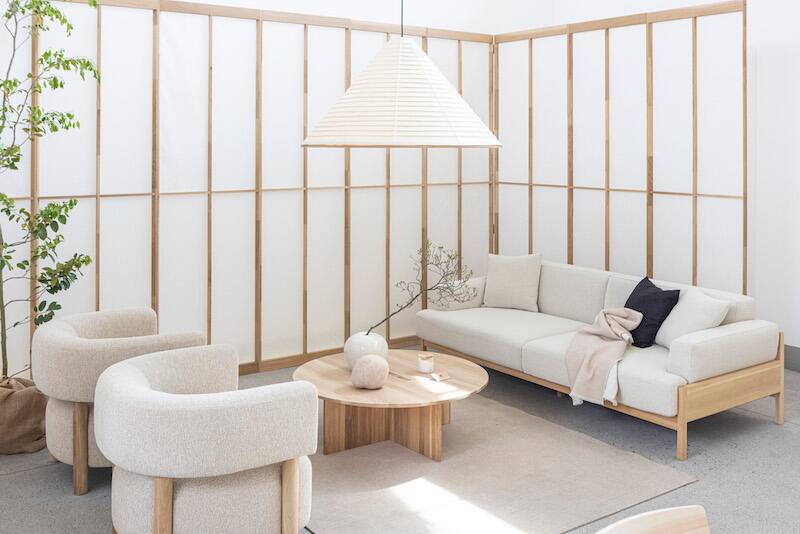
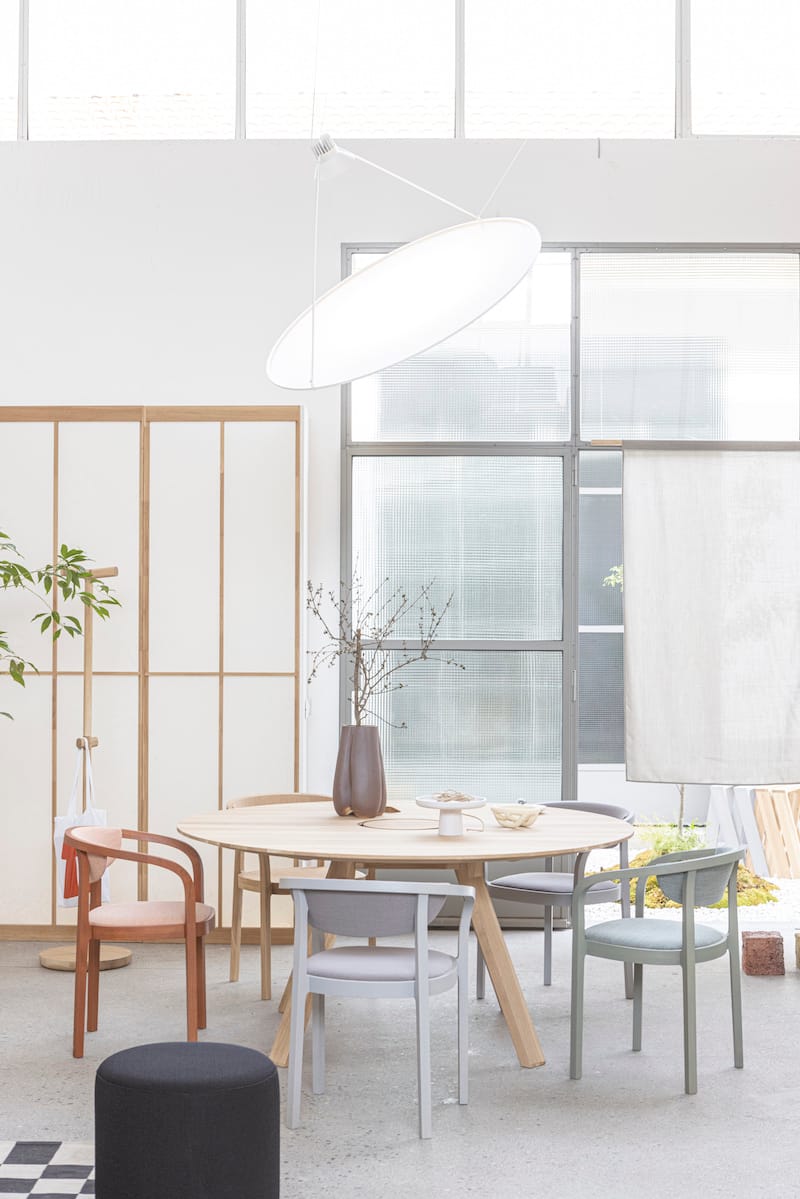
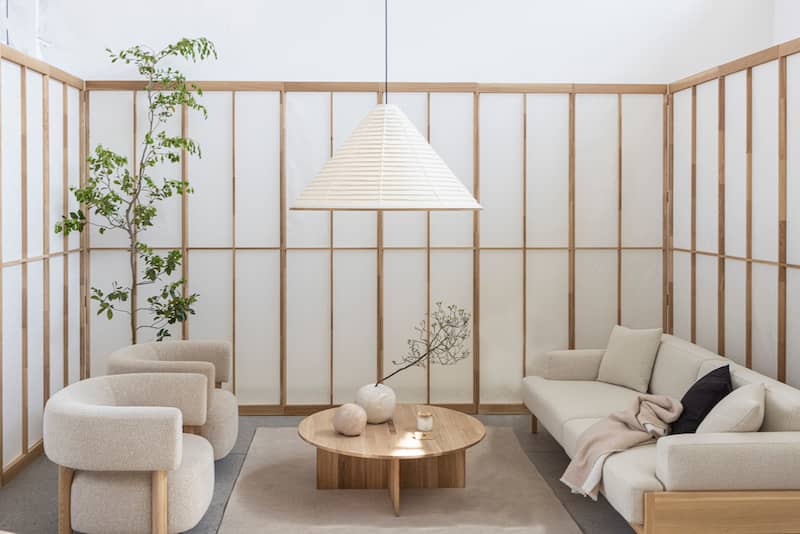
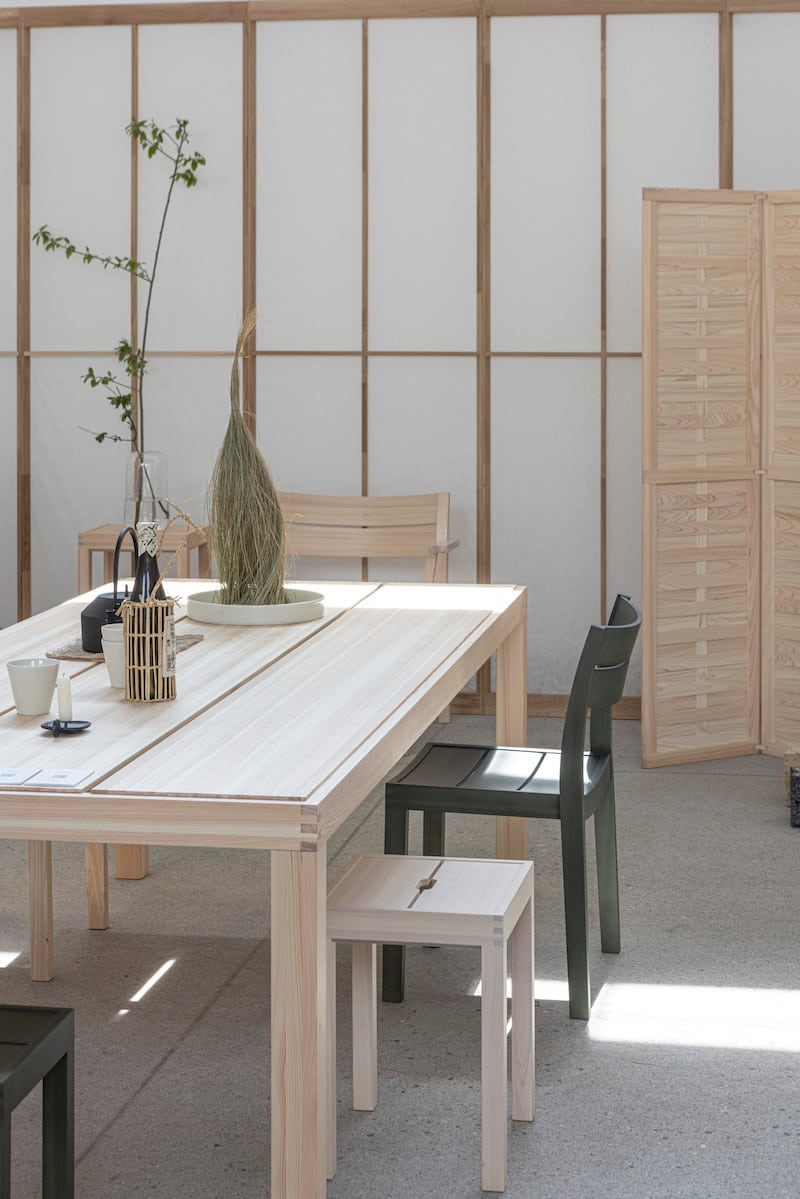
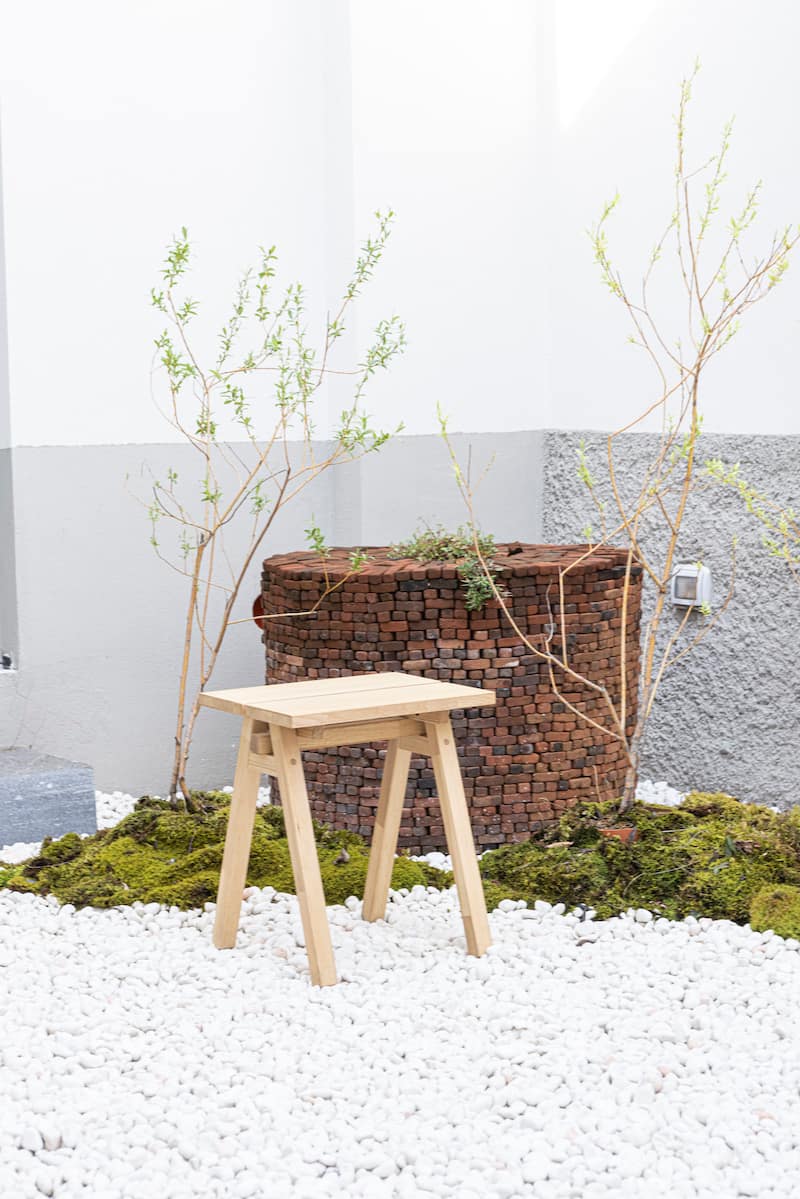
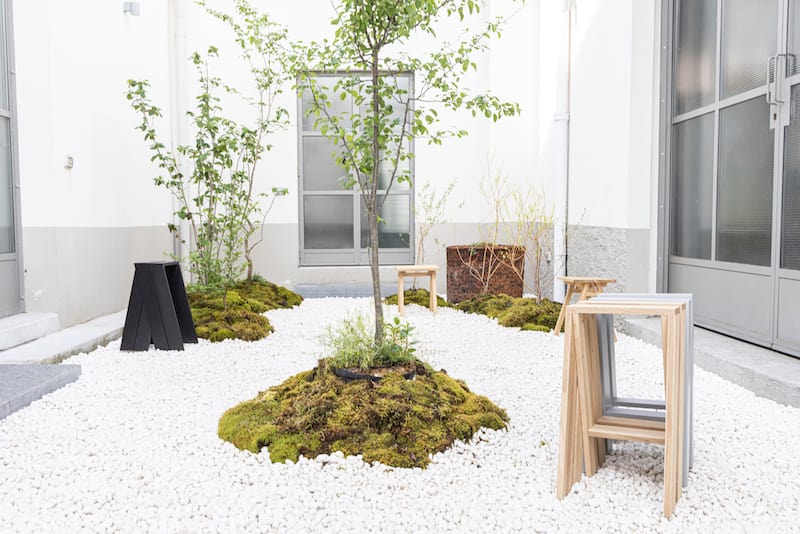
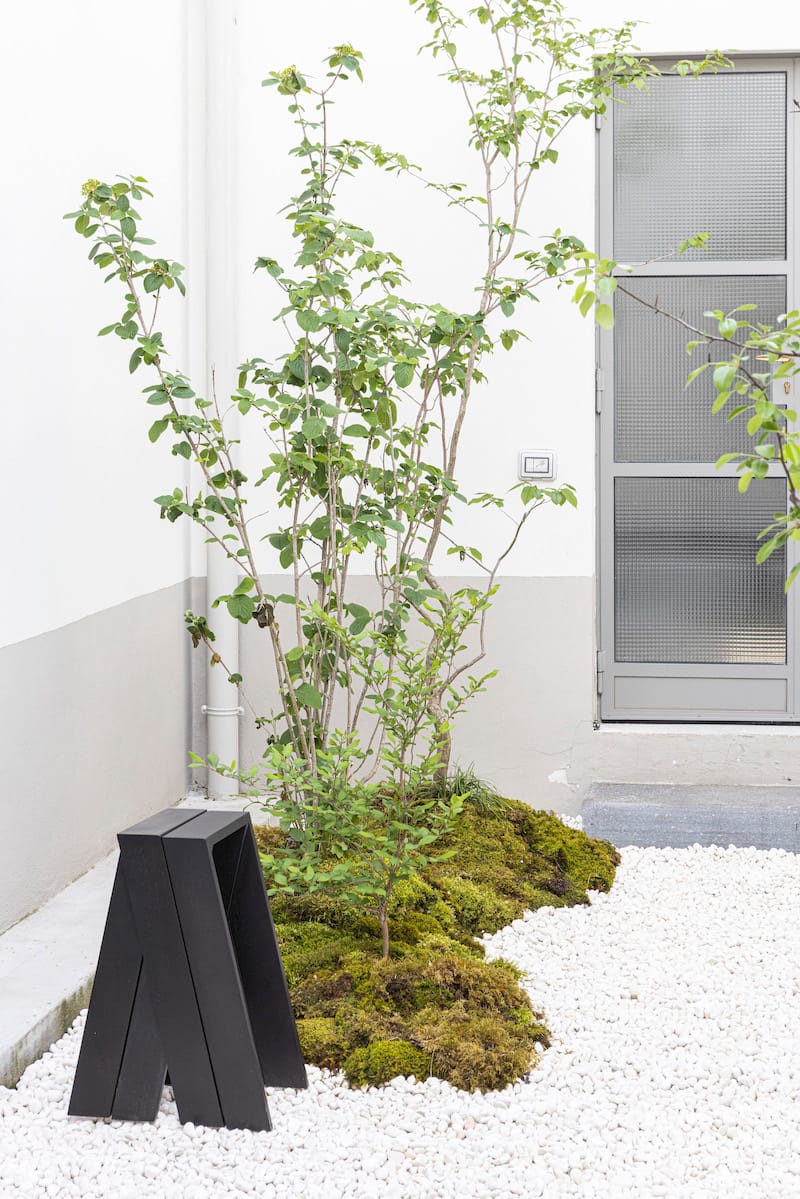
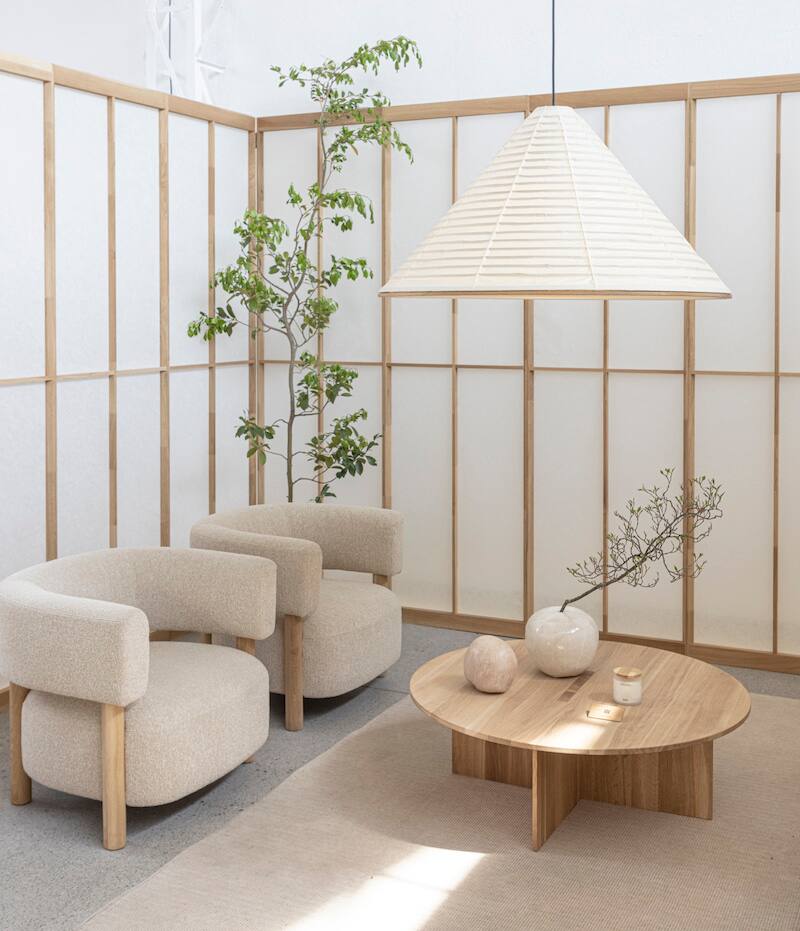
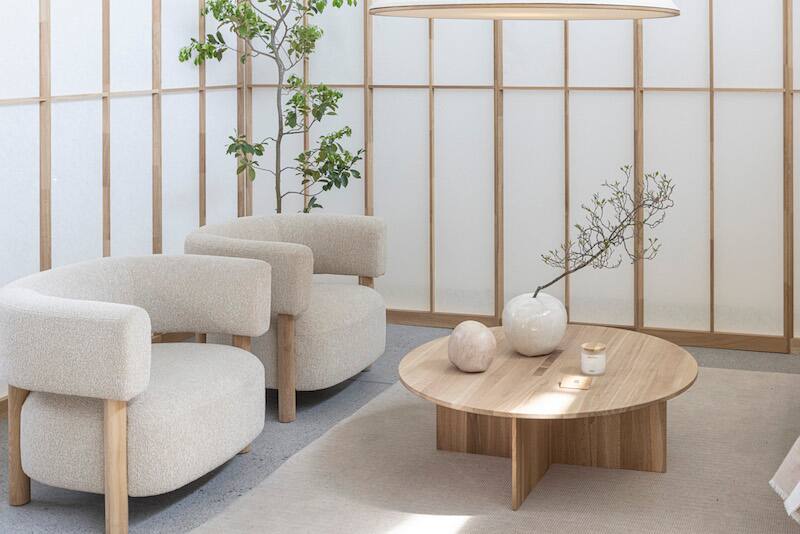
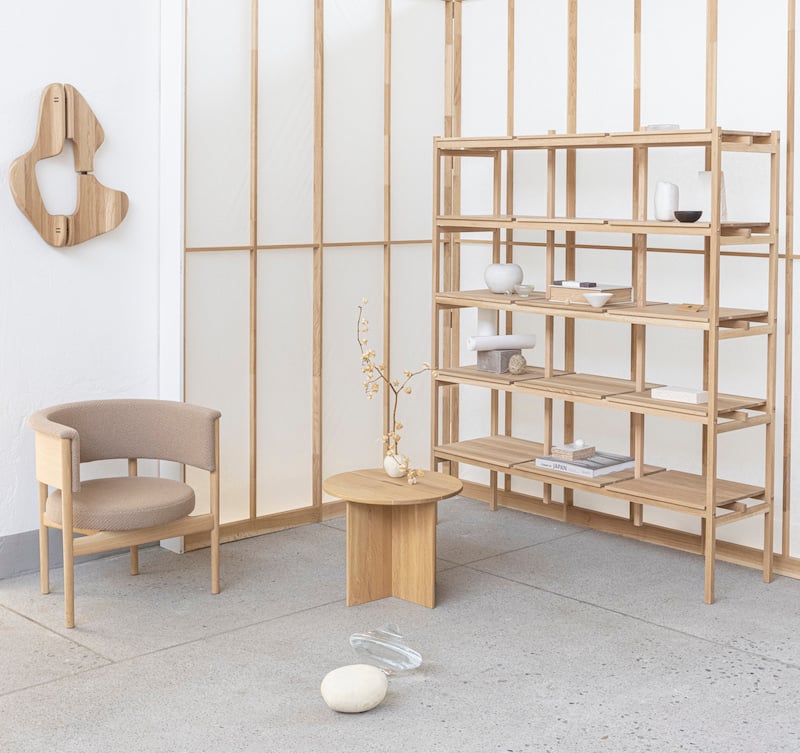
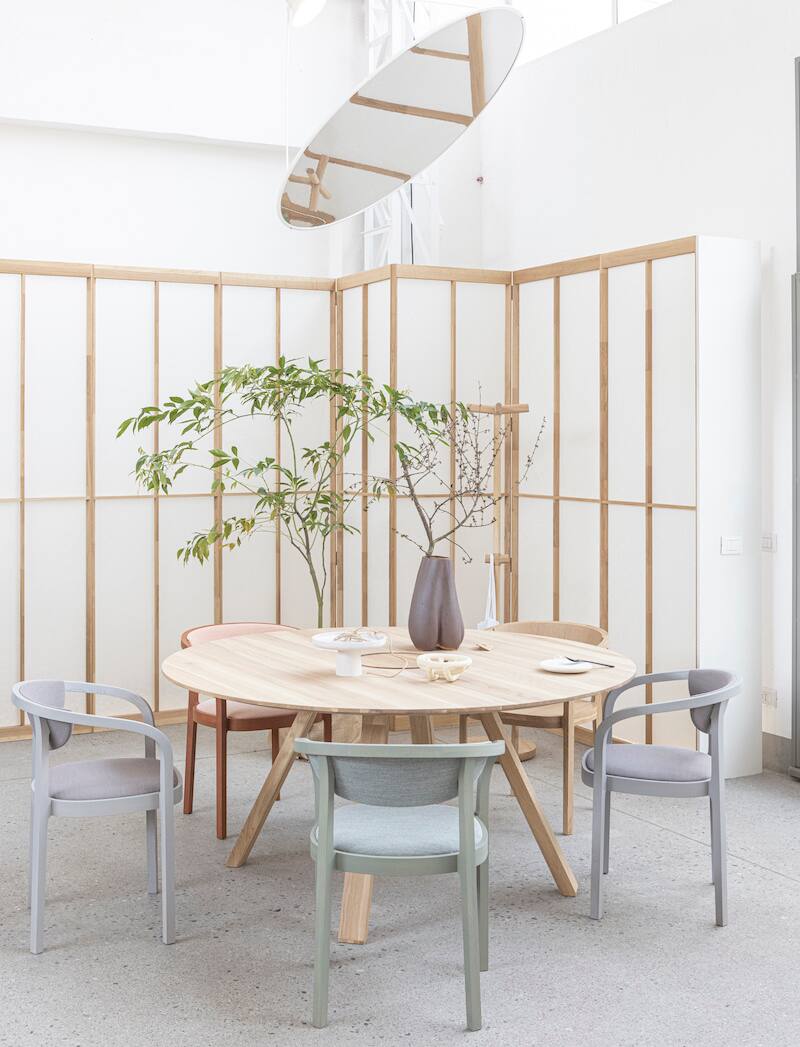
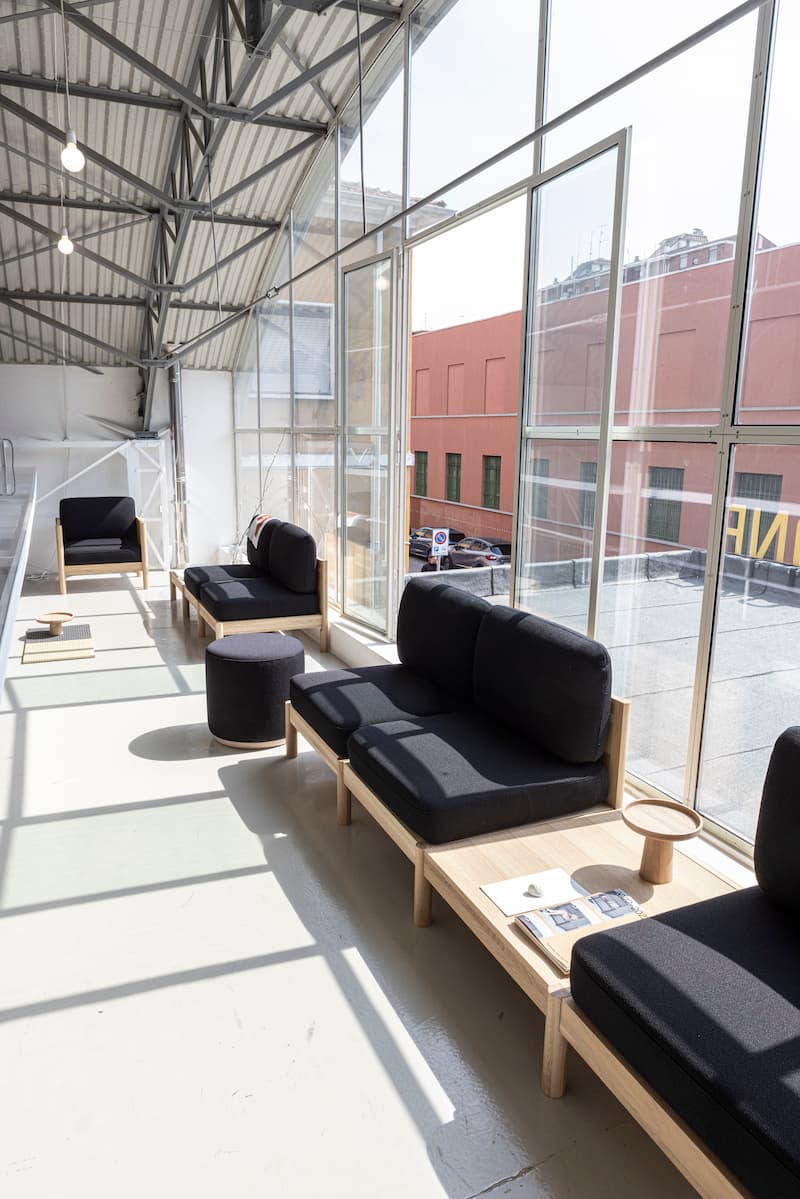
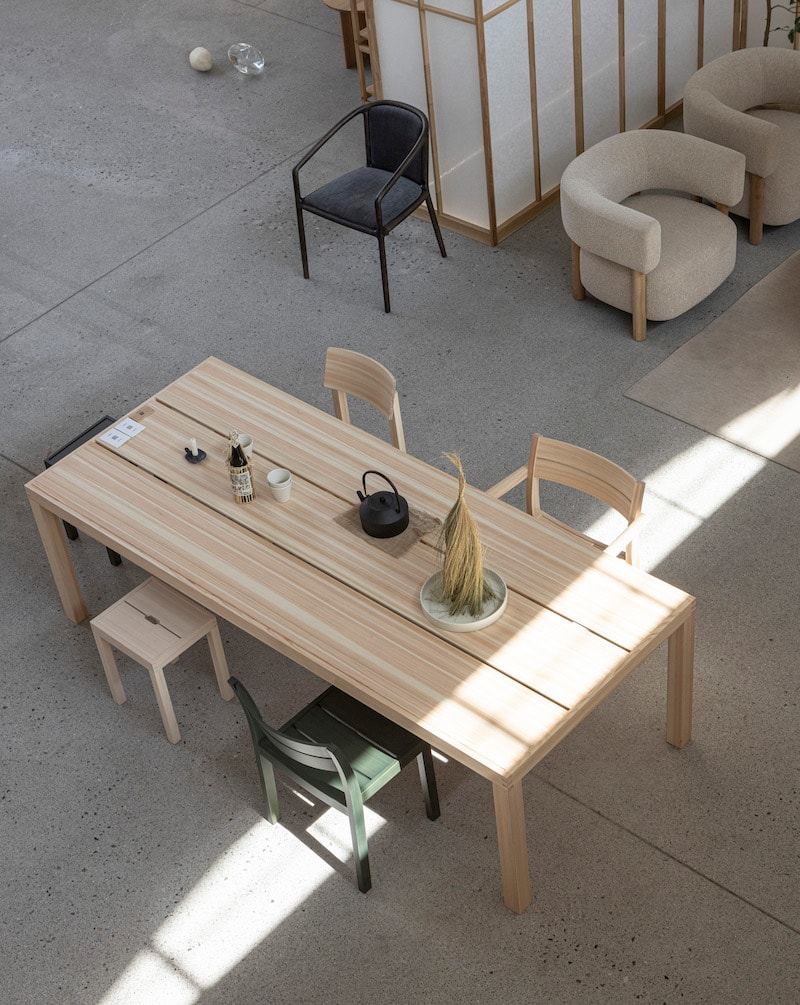
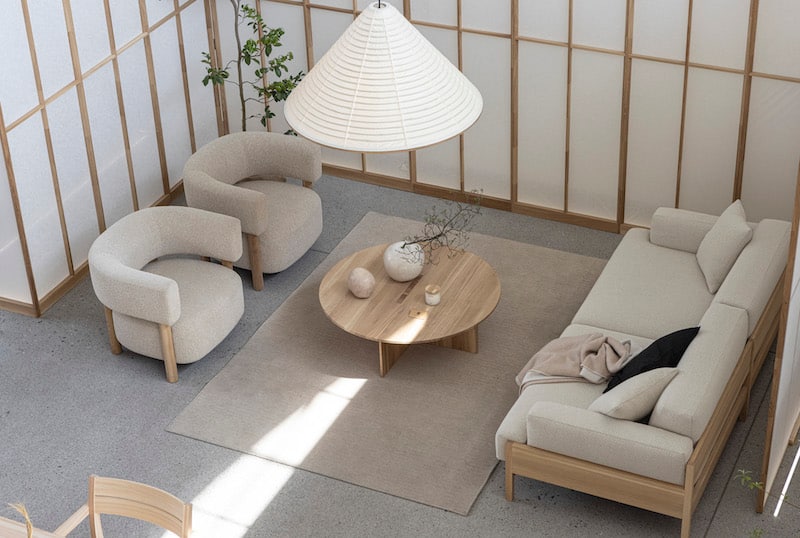
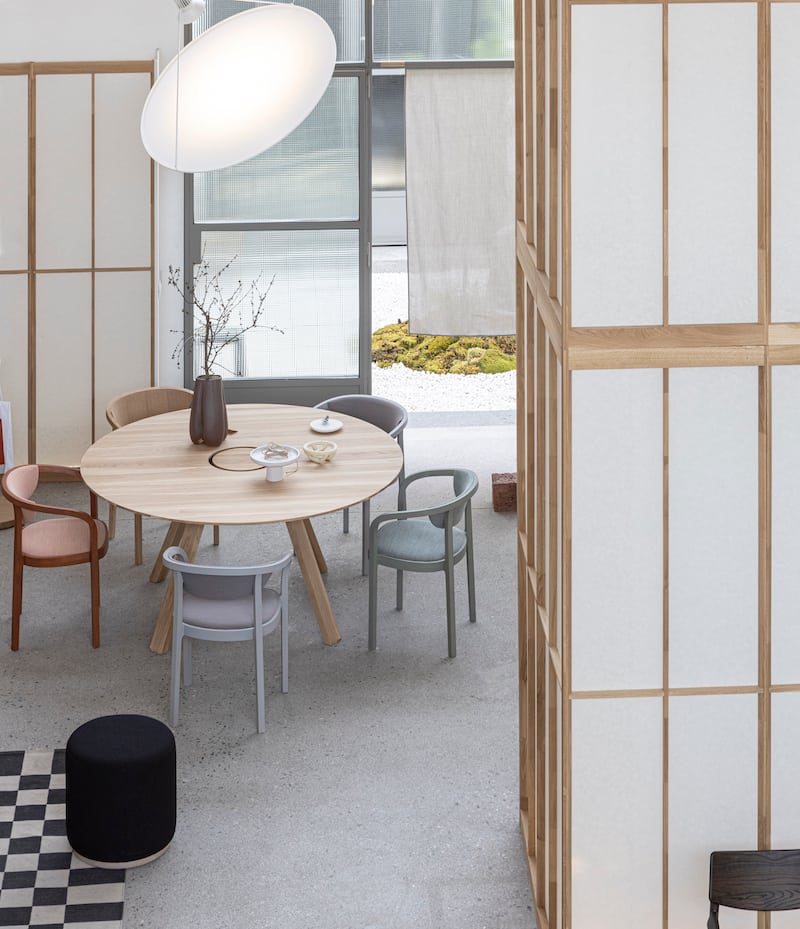
Jar Concengco
Jar Concengco
Jar Concengco
Jar Concengco
Jar Concengco
Jar Concengco
Jar Concengco
Jar Concengco
Jar Concengco
Jar Concengco
Jar Concengco
Jar Concengco
Jar Concengco
Jar Concengco
Jar Concengco
Jar Concengco
ADVERTISEMENT

Milan Design Week may have come and gone so quickly but Karimoku’s Pop Up Showroom held at Gallery Assab One in Milan resonates up until now. The largest wooden furniture manufacturer of Japan enlisted Copenhagen-based Norm Architects to curate the space.
Gallery Assab One’s industrial look was given the soft minimal treatment by Norm Architects. Noren curtains bearing the brand’s name in romanji and katakana set the drama as early as the entryway. Upon parting the curtains and stepping inside, visitors were immediately transported to a different place. Shoji screens lined the walls acting as a backdrop to Karimoku’s four premium brands: Karimoku New Standard, Karimoku Case Study, MAS, and Ishinomaki Laboratory by Karimoku.

Adept at weaving stories through interiors they design, Norm Architects let us in on a calm and serene setting. Large windows on both sides of the gallery were left without obstruction to allow natural light to flood the space.
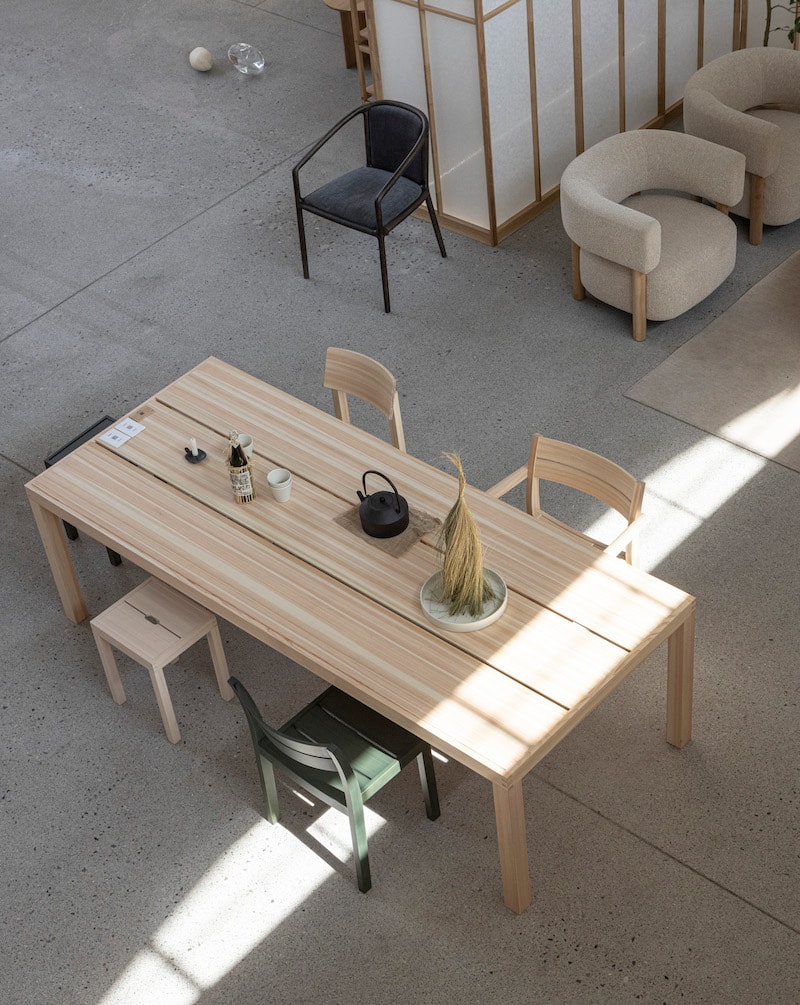
In one section, pieces from Karimoku Case Study create a quiet sitting area surrounding a large, conical Kojima Shoten pendant light made of washi paper. According to Norm Architects, Karimoku Case Study’s pieces “has been born out of specific needs for specific projects and has evolved from the architects’ point of view”. For instance, the sofa here was designed by architect Keiji Ashizawa specifically for the Kinuta Residence and seen again in the Michelin-starred Restaurang Ång. The two inviting chairs with an upholstered backrest and cylindrical legs were designed by Norm Architects for a shoe store in Copenhagen. Here in this space, they work seamlessly around a circular coffee table.
ADVERTISEMENT
The color palette is muted and neutral giving a hard focus on lines and materiality. Karimoku New Standard’s new pieces were on display for the first time in Europe including pieces designed by Berlin-based design studio Geckeler Michels. A 2-seater Fence Sofa that they designed has a heightened back that can act as a privacy wall - perfect for intimate conversations or focused reading for example. The Spectrum Table has a hidden cut out in the center that cleverly manages your electrical cords when charging devices.
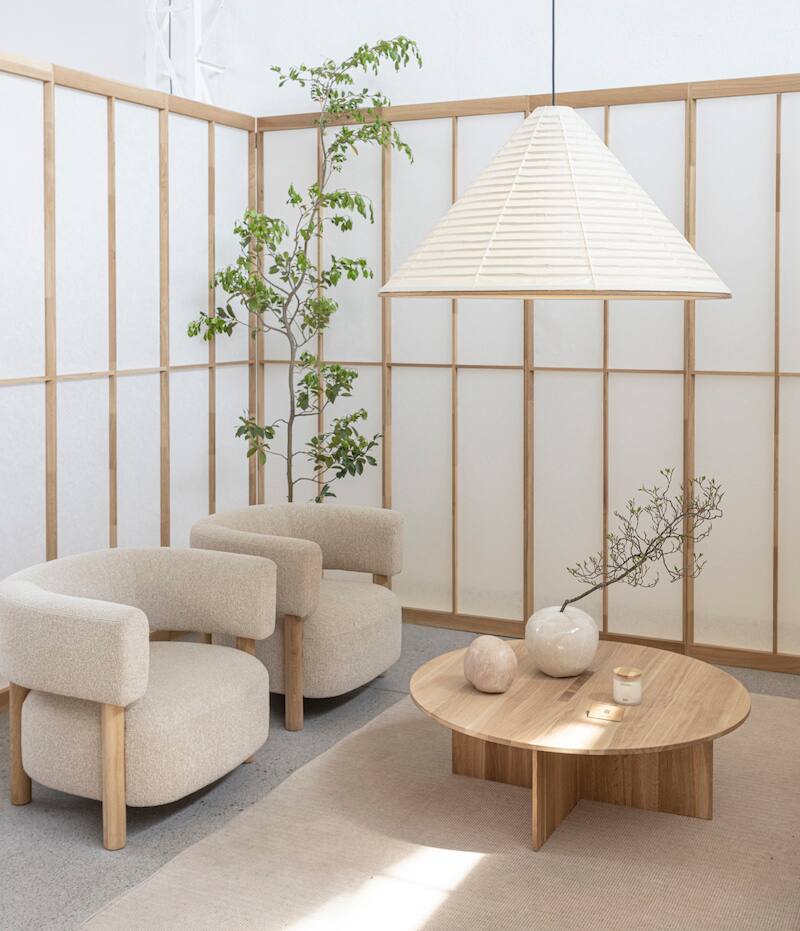
MAS is a brand by Karimoku that intends to use wood from Japanese conifer trees often overlooked by others. With Karimoku’s technology and expertise, they are able to process this wood and turn them into useful furniture designed by its brand director Wataru Kumano. Kumano says, “Currently, I feel the great significance of making furniture from wood more than ever. Considering the environmental issues, designers should avoid using non-reproducible materials for making products. In that sense, wood has great potential as a material that returns to nature. Since it is a living material, we can make unique furniture from it.”
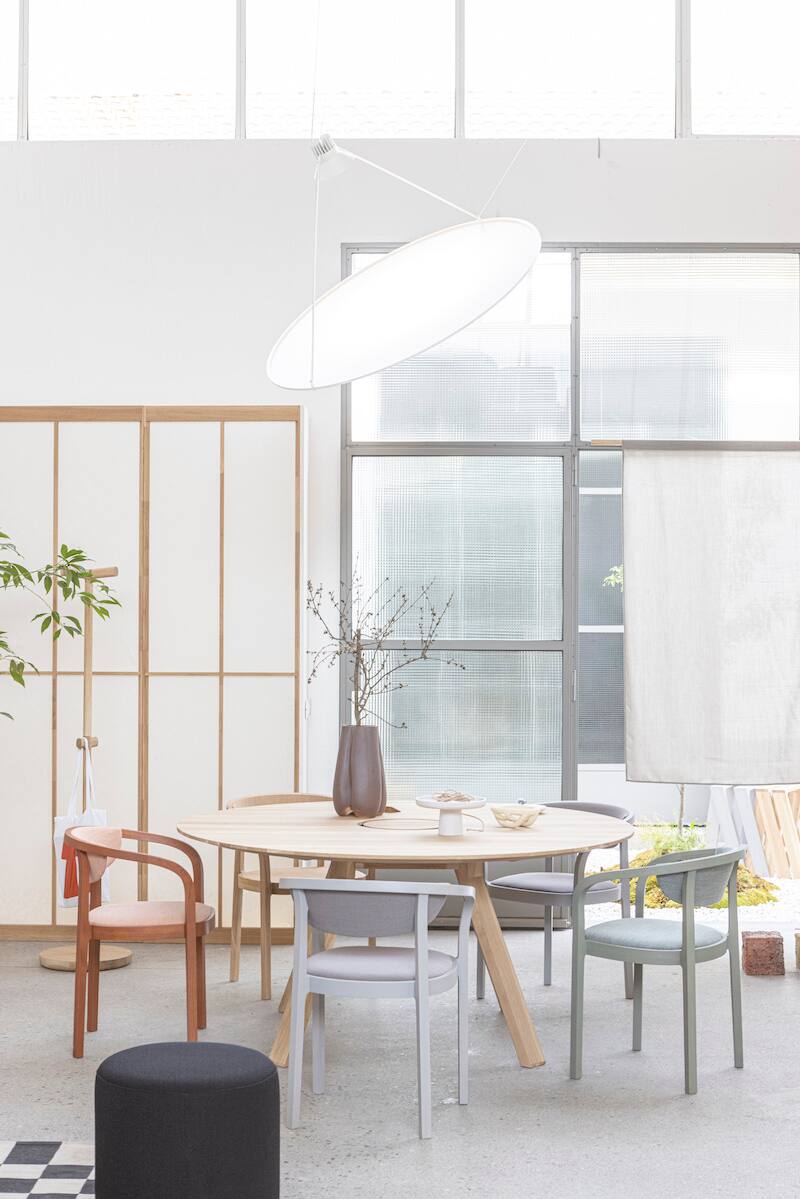
Benches of different lengths can be stacked vertically to form shelves. The convexity of their feet fits perfectly onto the opening on the upper parts of the legs. The WK Dining Table has two slits on its surface to allow space for wood to stretch and also functions as a place to slide cables through.
A white spiral staircase leads to a small mezzanine where pieces of Karimoku New Standard’s latest collaboration with Swiss-based industrial design studio BIG-GAME sit. The CASTOR LOBBY sofa is a modular system where the sofa can have a backrest, or act like an ottoman or remain empty to become a side table.
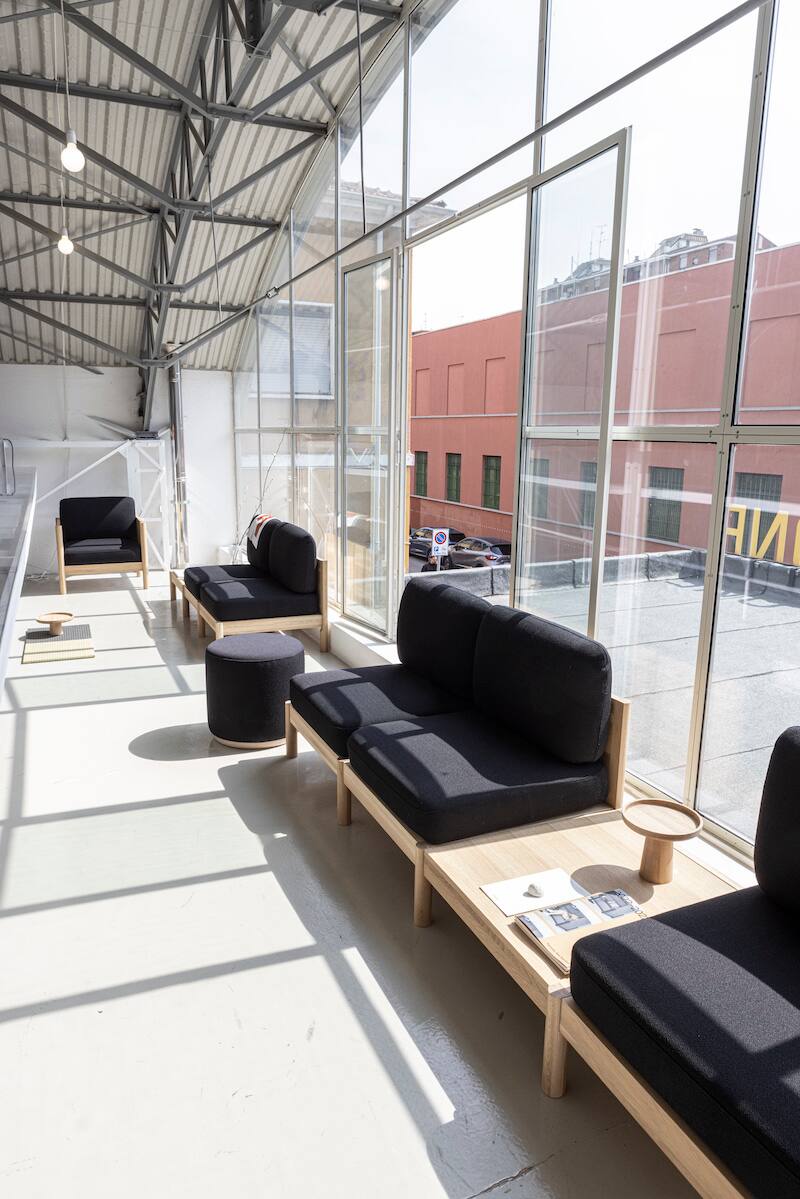
Another set of noren curtains leads you to a white stone garden where slimmer renditions of Ishinomaki Laboratory products by Karimoku are spread out among islands of moss and small trees. Keiji Ashizawa’s Ishinomaki Stool and TORAFU ARCHITECTS’ AA Stools in an al fresco setting speak of the products’ ability to withstand some elemental exposure.
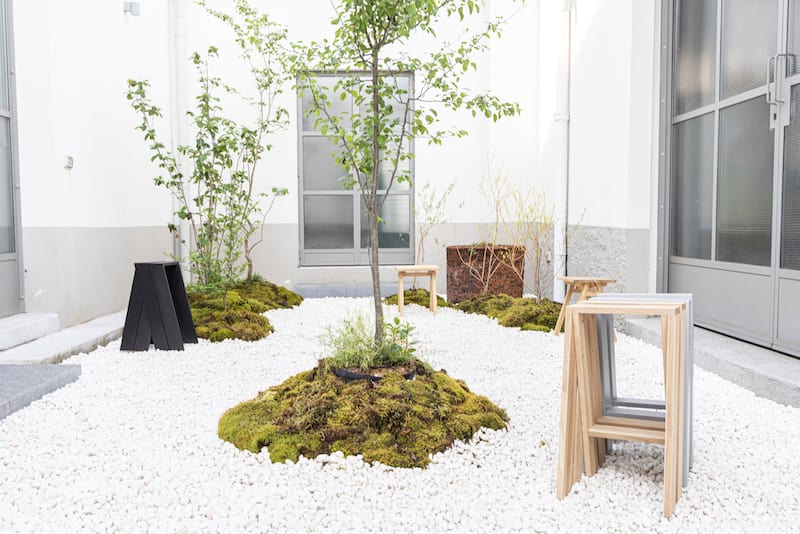
Karimoku’s Pop Up Showroom triggers inspiration and allows you to imagine the pieces in countless setups. It also encourages you to consider every piece that you bring into your own home hoping that they help in telling a story.
ADVERTISEMENT
ADVERTISEMENT